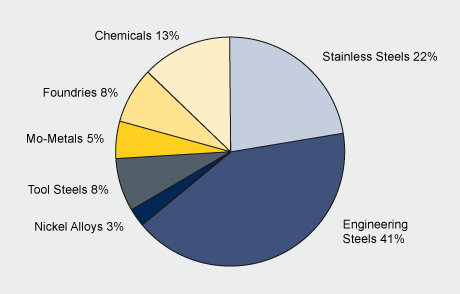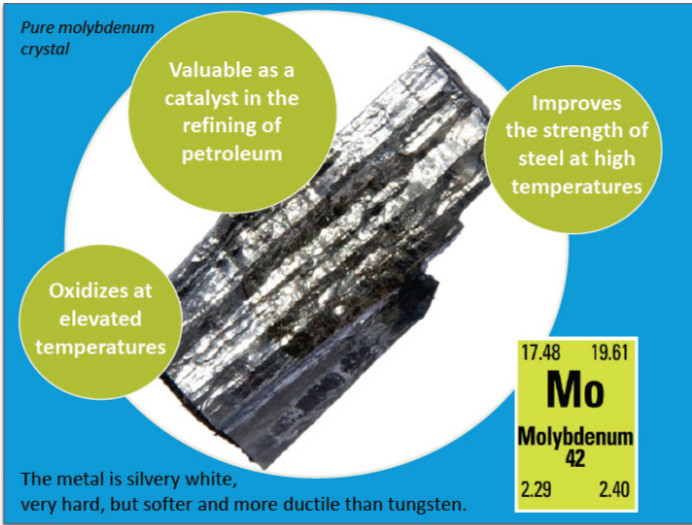What are The Uses of Molybdenum
In 1782, Elm of Sweden used linseed oil blended charcoal and molybdic acid mixture for sealed burning, and molybdenum was acquired. Molybdenum is a kind of silver-white metal. It is hard and tough and is free from the erosion of the air at room temperature. It doesn’t have a chemical reaction with hydrochloric acid or hydrofluoric acid. Molybdenum is mainly used in the steel industry (80%), followed by its applications in the chemical field, which roughly accounts for 10%. In addition, molybdenum is also used in electrical and electronic technology, medicine and agriculture, and other fields.
The application of molybdenum in the steel field:
In the steel field, molybdenum is mainly used for the production of alloy steel, stainless steel, tool steel, high-speed steel, cast iron, and roll. The use of molybdenum as an additive can enhance the strength and toughness, corrosion resistance, and wear resistance of steel, improve the hardenability, weldability, and heat-resistance of steel. The formation of molybdenum alloy by adding other elements to molybdenum, such as molybdenum lanthanum alloy and TZM alloy, has a better performance than pure molybdenum.
The application of molybdenum in the chemical field:
In the chemical field, molybdenum can be used as lubricants, catalysts, pigments, flame retardants and smoke suppressants, and corrosion inhibitors of organic polymer. The main products include molybdenum dioxide, molybdenum yellow, molybdate, ammonium paramolybdate.

The application of molybdenum in electronic and electrical fields:
Molybdenum has good electrical conductivity and high-temperature resistance. Its thermal expansion coefficient is similar to that of glass. It’s widely used in the production of the core wire, lead wire, hook, and other components of spiral filament. Molybdenum wire is also the ideal electrode wire for a cutting tool machine, which can cut a variety of steel and carbide. Its processing is stable, which can effectively improve the precision of the mold.
The application of molybdenum in medical, animal husbandry, and agricultural field:
Molybdenum is one of the essential trace elements in the human body. The proper amount of molybdenum can promote the development of the human body, enhance the storage of oxygen in the body and inhibit tumors. Ammonium molybdate is used as an active ingredient of medicines. In animal bodies, molybdenum is a molybdenum enzyme composition. Adding the molybdenum additives to the feed can achieve the goal of meeting the needs of animals. Molybdenum is also one of the essential trace elements for plant growth. Seeding using ammonium molybdenum can greatly increase the yield of flowers.



